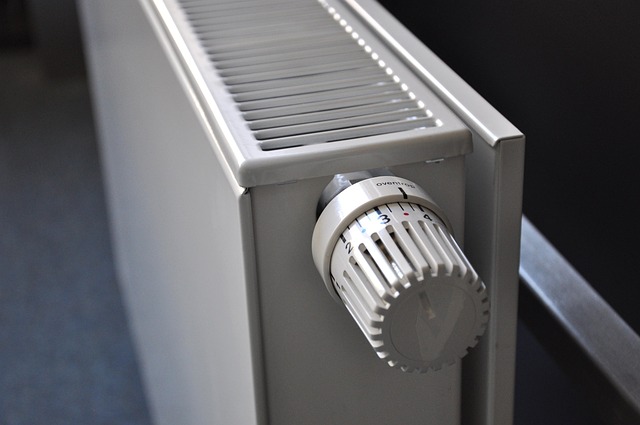Heating Oil Prices in Northern Ireland: A Practical Guide to Rates, Drivers and Savings
Understanding heating oil prices in Northern Ireland requires knowledge of market dynamics, seasonal patterns, and supplier variations. With oil heating remaining a primary energy source for many households across the region, staying informed about pricing trends and cost-saving strategies can significantly impact your annual heating budget. This comprehensive guide explores the factors that influence heating oil costs, where to find competitive rates, and practical methods to reduce your overall heating expenses throughout the year.

Heating oil remains a crucial energy source for thousands of homes across Northern Ireland, particularly in rural areas where mains gas connections are limited. The cost of heating oil fluctuates regularly due to various market forces, making it essential for homeowners to understand pricing mechanisms and develop strategies for managing their heating expenses effectively.
Where to Find Current Heating Oil Prices in NI
Several reliable sources provide up-to-date heating oil prices across Northern Ireland. The Northern Ireland Oil Federation maintains price monitoring services, while individual suppliers like Campus Oil, Cookstown Fuels, and Firmus Energy publish their current rates online. Many suppliers offer price comparison websites where customers can input their postcode to receive quotes from multiple providers. Local newspapers often feature weekly oil price updates, and community Facebook groups frequently share current rates and supplier recommendations. Additionally, price comparison apps specifically designed for heating oil allow users to track price movements and set alerts when costs drop below certain thresholds.
Key Factors Influencing Heating Oil Prices in Northern Ireland
Multiple interconnected factors determine heating oil prices in the region. Global crude oil prices form the foundation, with fluctuations in international markets directly impacting local costs. Exchange rates between the pound sterling and US dollar significantly affect pricing, as oil is typically traded in dollars. Seasonal demand creates predictable price patterns, with costs generally rising during autumn and winter months when consumption peaks. Local supply chain factors, including transportation costs from refineries and storage capacity, also influence final prices. Government policies, including fuel duty rates and environmental regulations, contribute to overall pricing structures. Weather patterns affect both demand and supply logistics, with severe winters driving up consumption while adverse conditions can disrupt delivery schedules.
How to Compare Suppliers and Get the Best Price
Effective supplier comparison requires systematic evaluation of multiple factors beyond headline prices. Start by obtaining quotes from at least three to five local suppliers, ensuring you compare like-for-like quantities and delivery terms. Consider minimum order requirements, as some suppliers offer better rates for larger purchases while others cater to smaller households. Payment terms vary significantly between providers, with some offering discounts for immediate payment while others provide credit facilities. Delivery charges and scheduling flexibility should factor into your decision, particularly if you live in remote areas. Customer service quality and reliability matter significantly, especially during peak winter periods when prompt delivery becomes crucial.
| Supplier | Service Area | Price Range (per litre) | Minimum Order | Key Features |
|---|---|---|---|---|
| Campus Oil | Region-wide | £0.65-£0.75 | 500 litres | Online ordering, price alerts |
| Cookstown Fuels | Central/Western NI | £0.63-£0.73 | 300 litres | Family business, flexible delivery |
| Firmus Energy | Greater Belfast | £0.66-£0.76 | 400 litres | Established network, credit terms |
| Local Co-ops | Various areas | £0.64-£0.74 | 200 litres | Community focus, competitive rates |
| Independent Dealers | Rural areas | £0.62-£0.78 | Variable | Personal service, negotiable terms |
Prices, rates, or cost estimates mentioned in this article are based on the latest available information but may change over time. Independent research is advised before making financial decisions.
Practical Ways to Reduce Your Heating Oil Bills
Implementing energy efficiency measures represents the most effective long-term strategy for reducing heating oil consumption. Proper insulation in lofts, walls, and floors can reduce heating requirements by up to 30%. Regular boiler servicing ensures optimal efficiency, while upgrading to a modern condensing boiler can improve performance significantly. Smart heating controls, including programmable thermostats and zone heating systems, allow precise temperature management and prevent unnecessary consumption. Simple behavioral changes, such as lowering thermostat settings by one degree or using draft excluders, can generate meaningful savings. Bulk purchasing during summer months when prices typically drop can provide substantial cost benefits, though this requires adequate storage capacity and upfront capital.
Price Forecasts and Planning for Seasonal Fluctuations
Understanding seasonal price patterns enables strategic purchasing decisions throughout the year. Heating oil prices typically reach their lowest points during late spring and early summer when demand decreases and suppliers compete for market share. Autumn brings gradual price increases as households begin restocking for winter, while peak winter months often see the highest prices due to maximum demand. Economic forecasts suggest continued volatility in global energy markets, influenced by geopolitical tensions, environmental policies, and renewable energy transitions. Planning ahead involves monitoring price trends, maintaining adequate storage capacity, and considering fixed-price contracts during favorable market conditions. Some suppliers offer budget payment schemes that spread costs evenly throughout the year, helping households manage cash flow while protecting against sudden price spikes.
Managing heating oil costs in Northern Ireland requires a combination of market awareness, strategic planning, and energy efficiency measures. By staying informed about price movements, comparing suppliers effectively, and implementing practical conservation strategies, households can significantly reduce their annual heating expenses while maintaining comfortable living conditions throughout the changing seasons.




